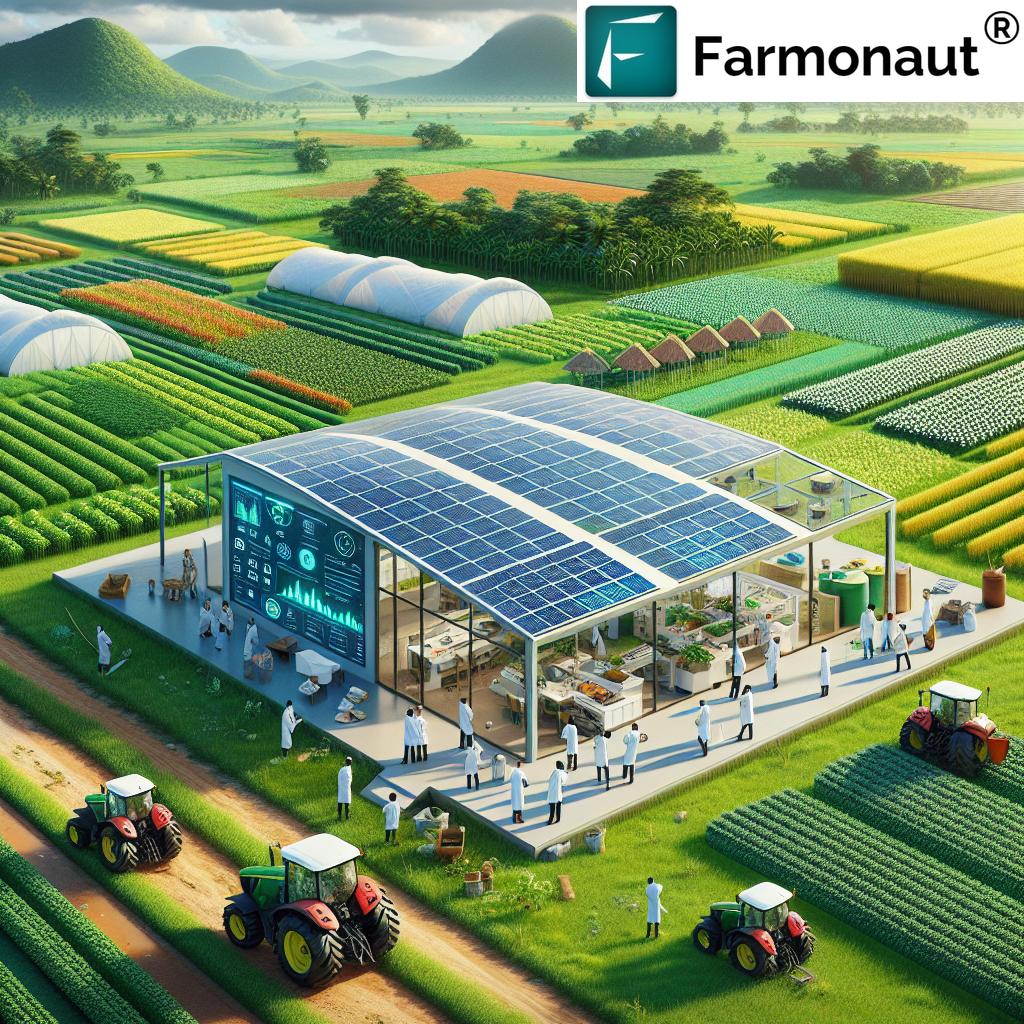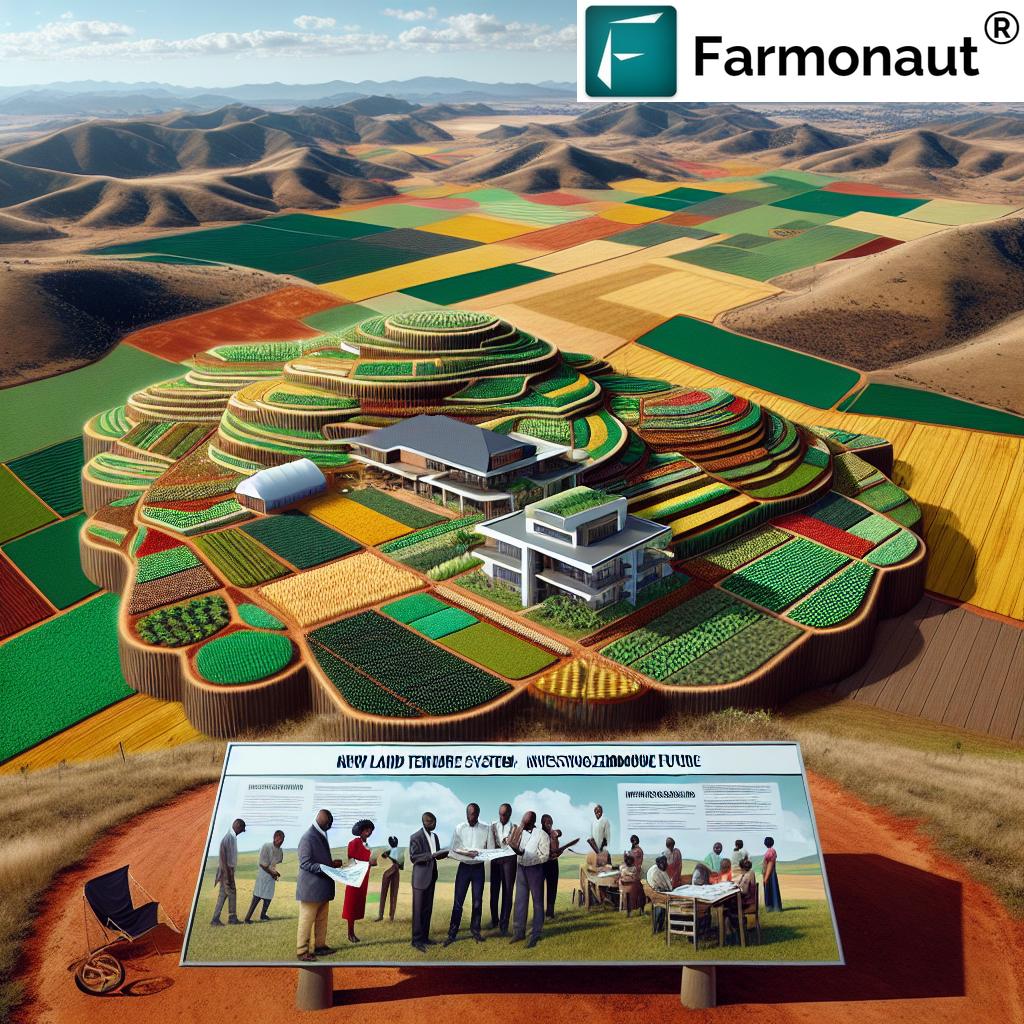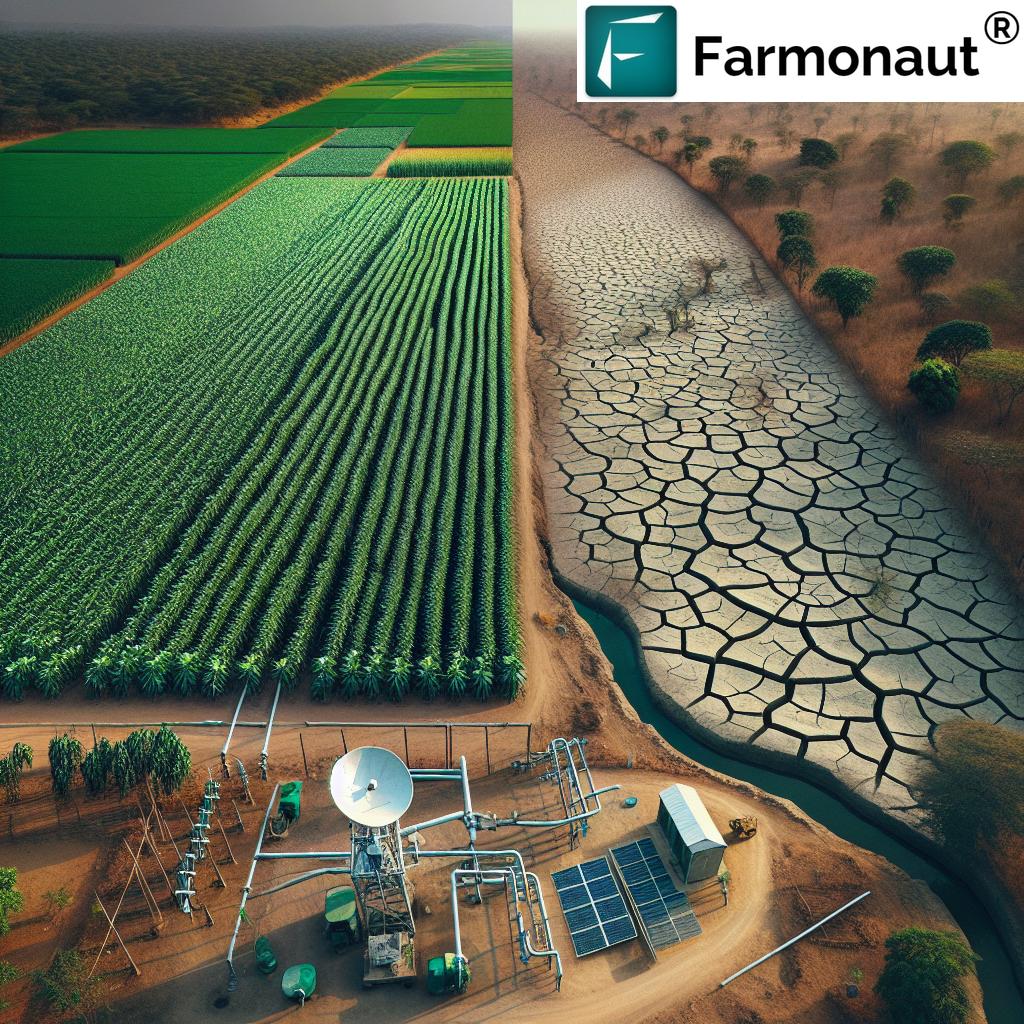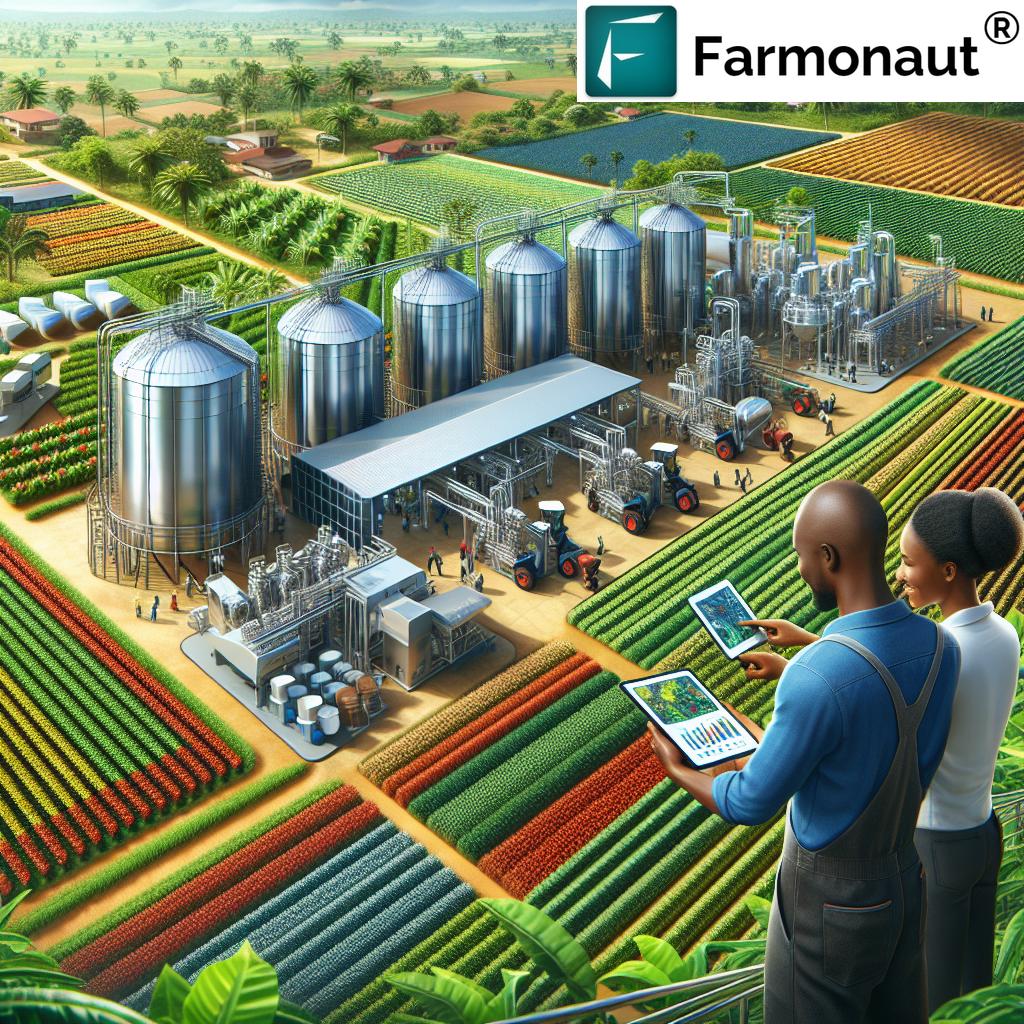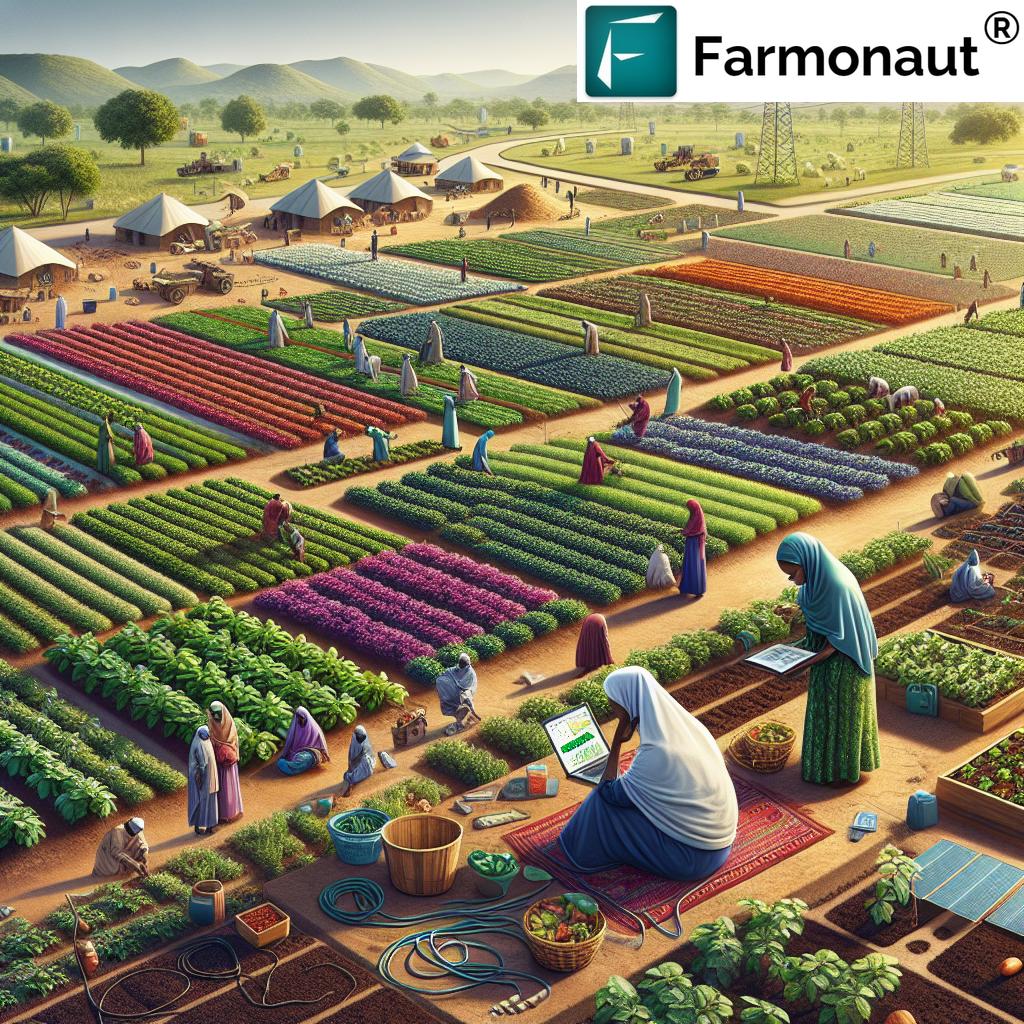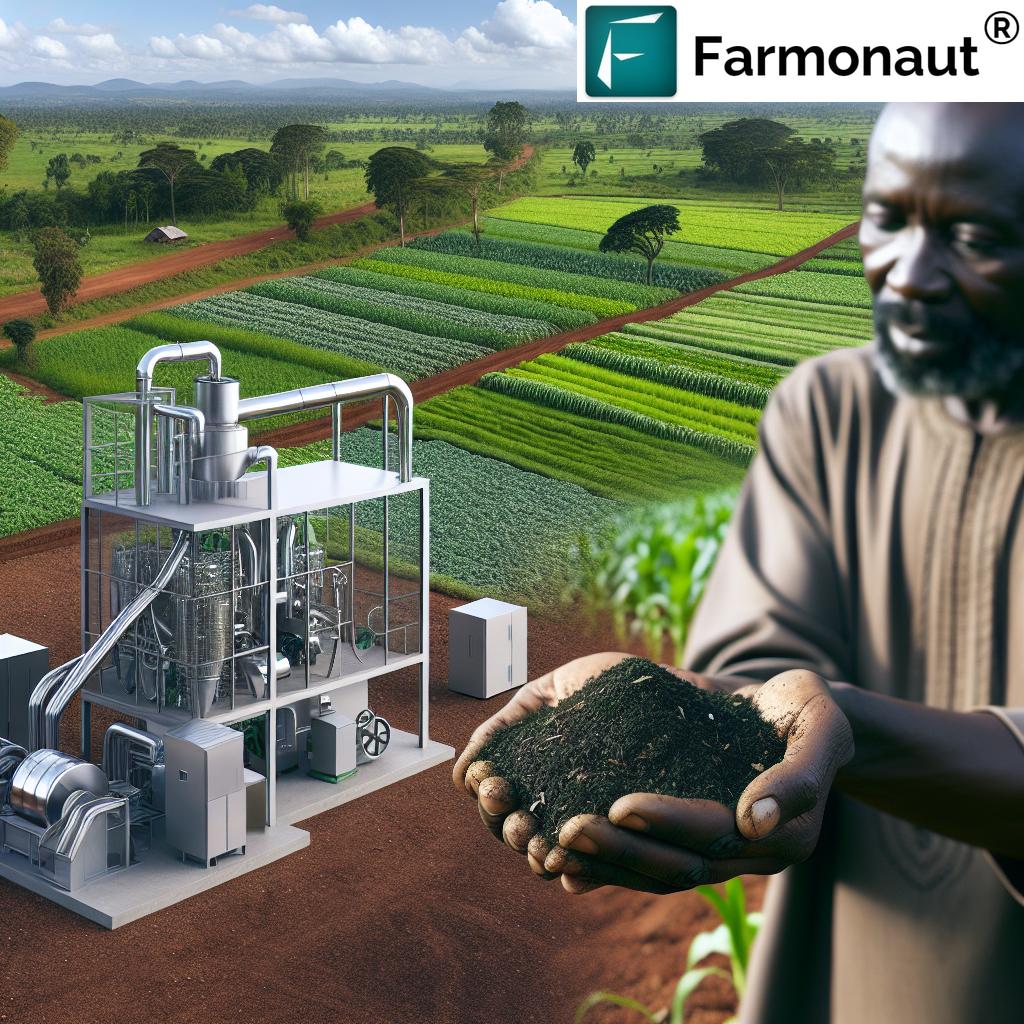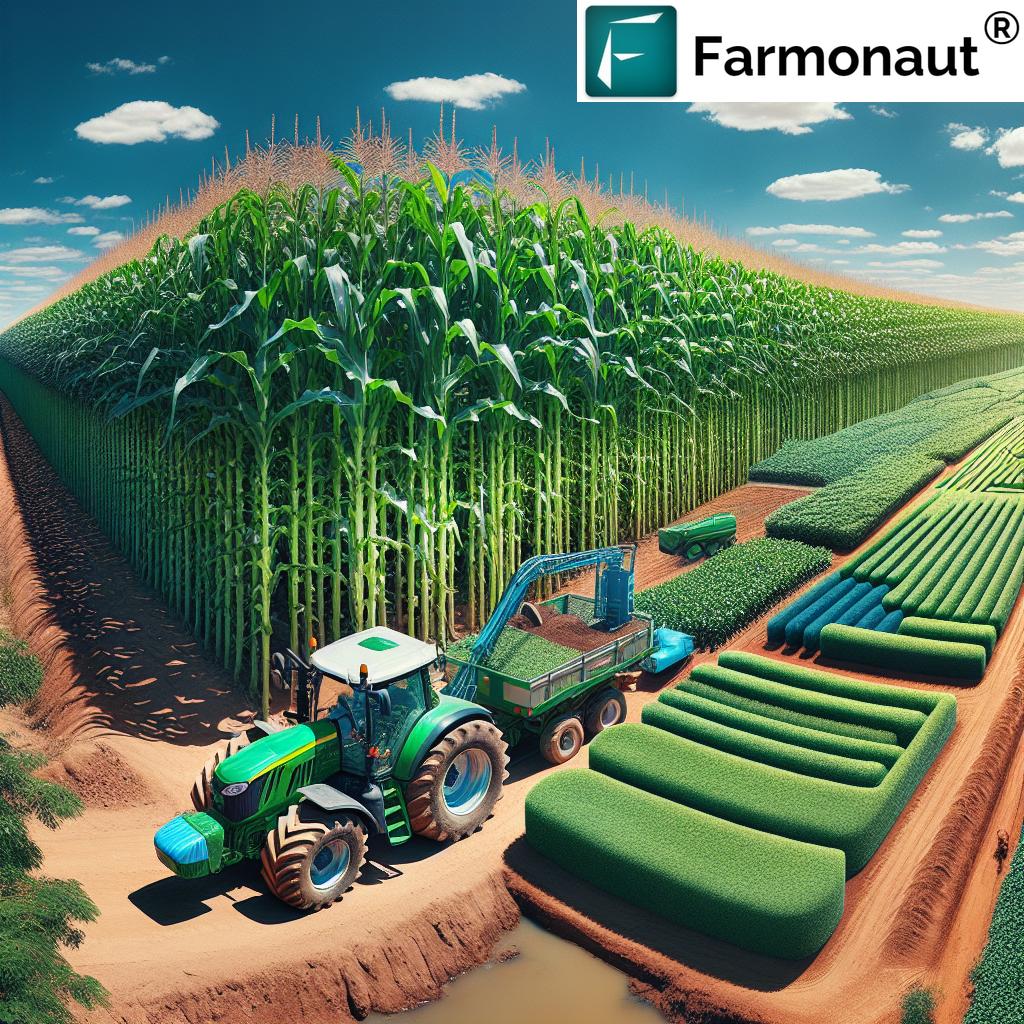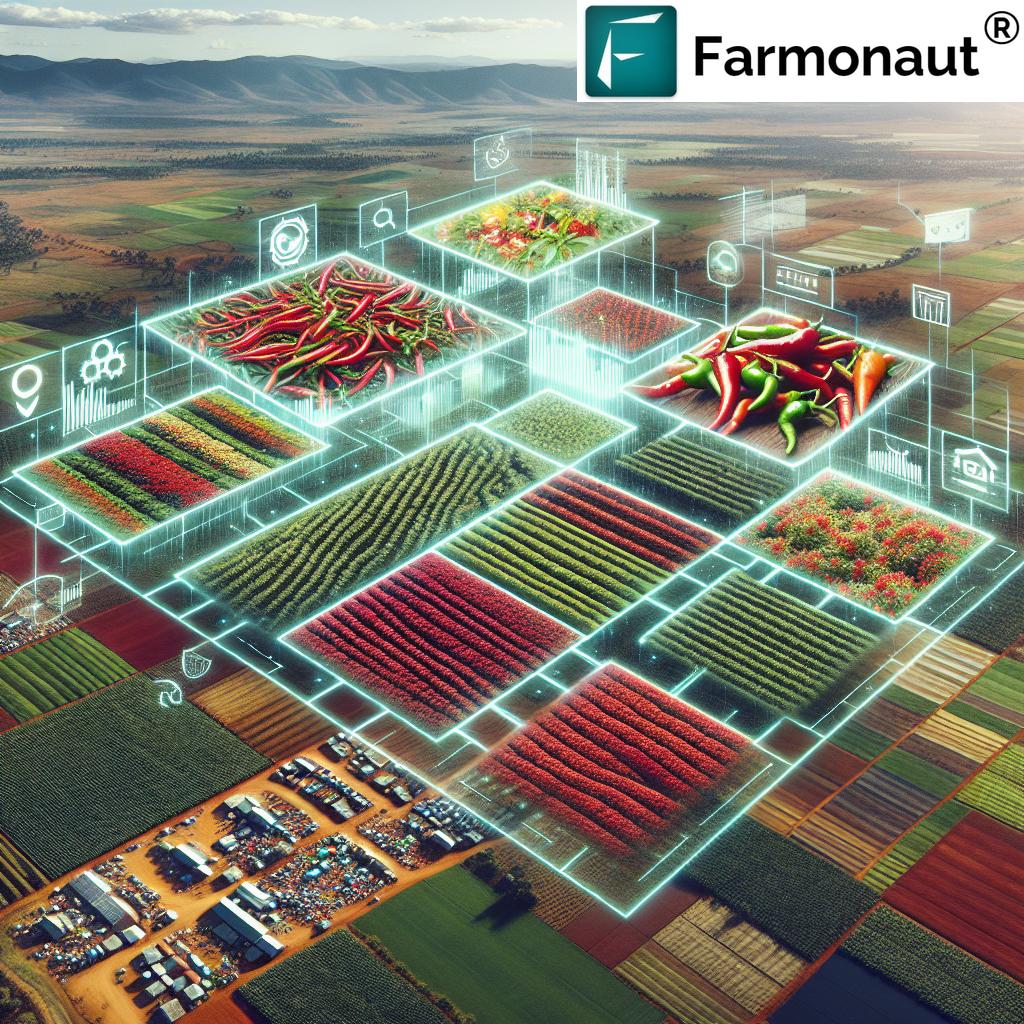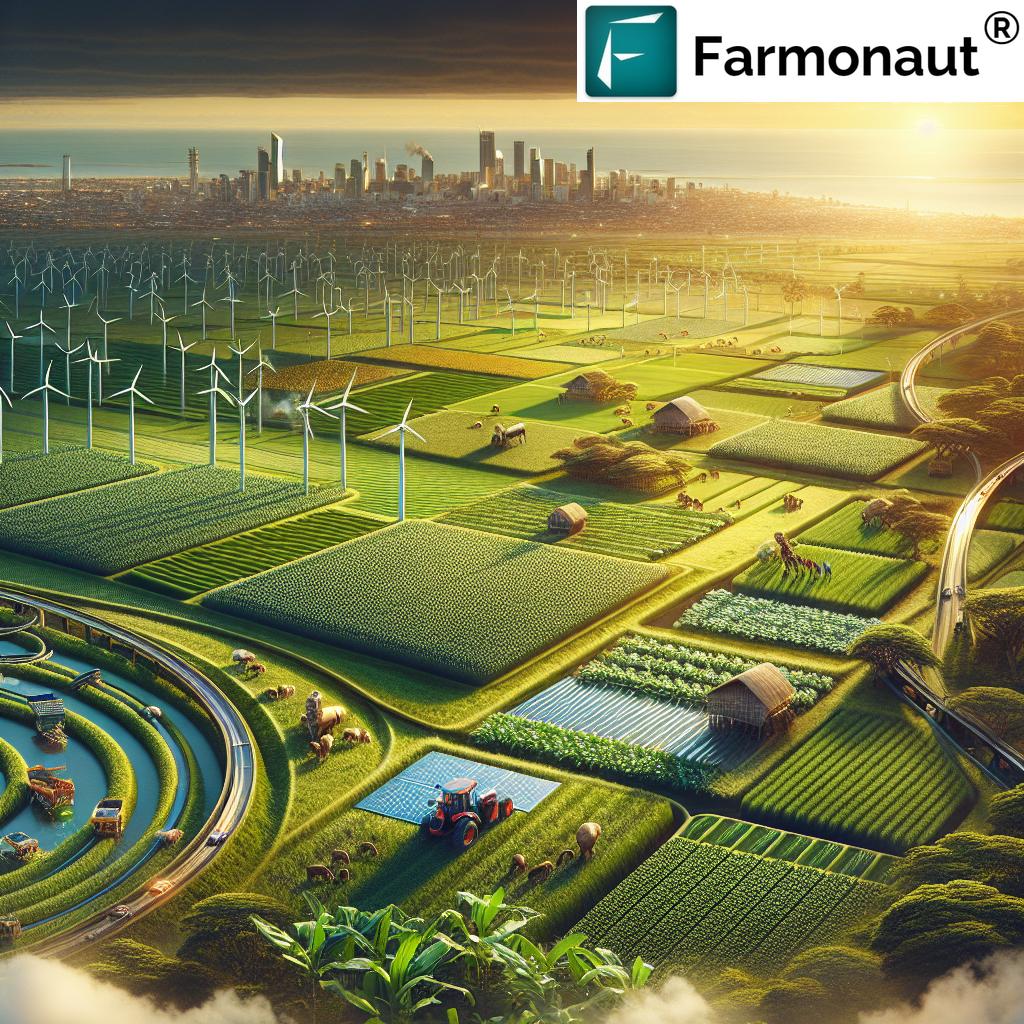Revolutionizing Global South Agriculture: AI and Climate-Resilient Solutions for Sustainable Farming
“AI-powered breeding services can analyze up to 100,000 genetic markers per plant, accelerating climate-resilient crop development by 40%”
As we navigate the complex challenges facing agriculture in the Global South, we find ourselves at a critical juncture where innovation and sustainability must converge. The urgent need for climate-resilient farming and sustainable agriculture solutions has never been more apparent. In this comprehensive exploration, we delve into the cutting-edge technologies and strategies that are reshaping the agricultural landscape, with a particular focus on how artificial intelligence (AI) and other advanced technologies are paving the way for a more resilient and productive future.
The Pressing Need for Agricultural Innovation in the Global South
The Global South, encompassing regions such as Sub-Saharan Africa, South Asia, and parts of Latin America, faces unique challenges in agricultural production. Climate change, biodiversity loss, and increasing pollution are exacerbating existing issues of food security and rural poverty. As temperatures rise and weather patterns become more erratic, smallholder farmers—who form the backbone of agricultural production in these regions—are particularly vulnerable.
Dr. Himanshu Pathak, Director General of the International Crops Research Institute for the Semi-Arid Tropics (ICRISAT), emphasizes the urgency of the situation: “Changing climate, increasing temperature, and increasing pollution are going to intensify the problem of degradation of its land, water, and air. To solve these problems, we strongly believe that new science and new technology will be very useful to address those challenges.”
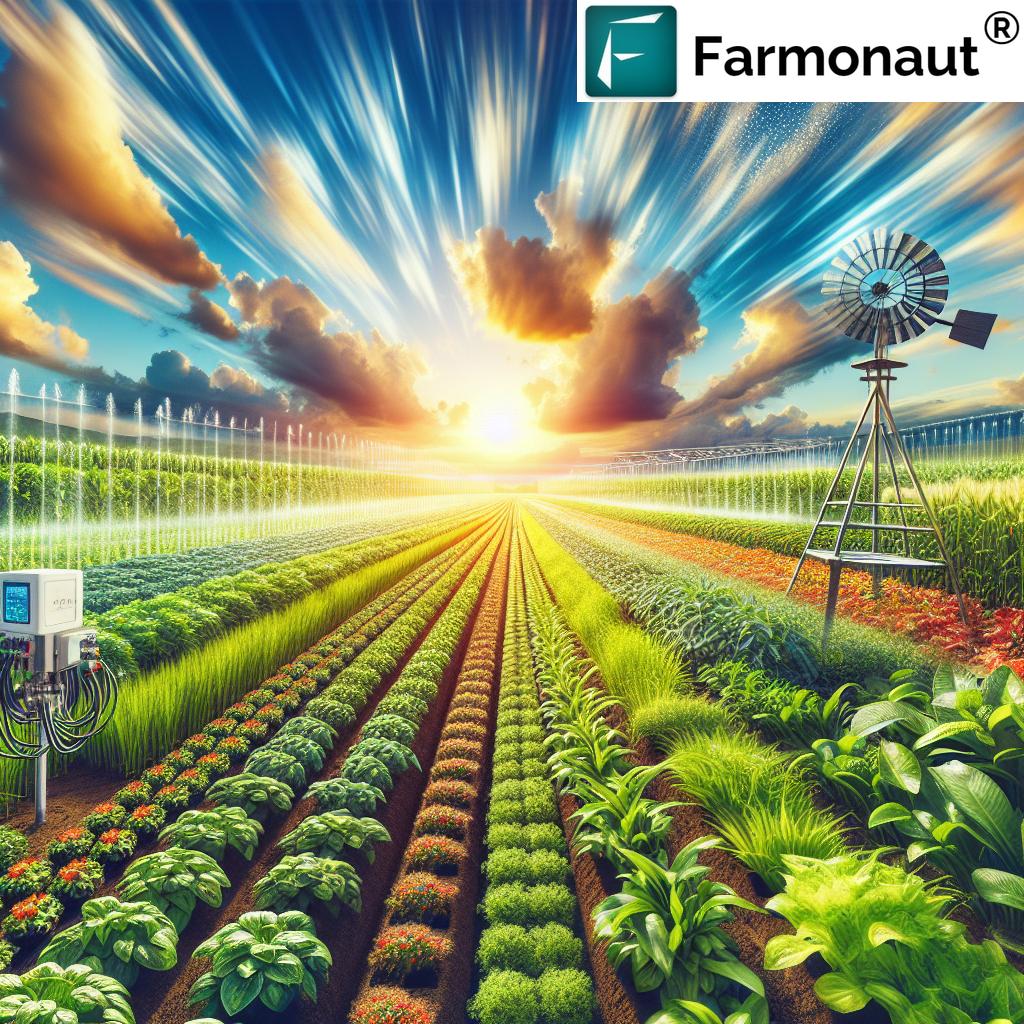
Innovative Crop Management Techniques for Climate Resilience
At the forefront of agricultural innovation are new crop management techniques designed to withstand the pressures of a changing climate. These include:
- Development of Climate-Tolerant Crop Varieties: Research institutions like ICRISAT are focusing on breeding crops that are not only high-yielding but also resistant to climatic stresses such as drought, heat, and flooding.
- Precision Agriculture: By leveraging technologies such as satellite imagery and AI, farmers can optimize resource use and increase yields. Platforms like Farmonaut offer satellite-based farm management solutions that provide real-time crop health monitoring and AI-based advisory systems.
- Soil and Water Conservation Practices: Innovative techniques for managing soil health and water resources are crucial for maintaining productivity in challenging environments.
These advancements are not just theoretical; they’re being put into practice across the Global South. For instance, ICRISAT’s work spans eight countries in Africa and collaborates with about 80 countries worldwide, focusing on crops like millets, sorghum, pulses, and groundnuts that are vital for food security in semi-arid regions.
The Role of AI and Machine Learning in Agriculture
Artificial Intelligence and Machine Learning are revolutionizing agriculture, offering unprecedented insights and efficiencies. Here’s how these technologies are making a difference:
- AI-Driven Crop Monitoring: Advanced algorithms analyze satellite imagery to assess crop health, predict yields, and detect issues early.
- Machine Learning for Breeding Services: By analyzing vast genetic datasets, ML accelerates the development of climate-resilient crop varieties.
- Personalized Farm Advisory: AI systems like Farmonaut’s Jeevn AI provide tailored recommendations based on real-time data and historical patterns.
David Guerena, a research scientist at the Alliance Biodiversity International-CIAT, highlights the importance of AI in bridging the gap between farmers and researchers: “It is important that we speak to farmers directly to help customize agricultural advisory services and linkages to markets. AI is also successfully interfacing with breeding teams.”
Bridging Indigenous Knowledge with Modern Science
While embracing cutting-edge technology, it’s crucial to recognize the value of traditional farming practices that have sustained agriculture for millennia. The challenge lies in finding a harmonious blend of indigenous knowledge and modern scientific approaches.
Guerena emphasizes this point: “Indigenous knowledge gives a historical understanding and science is more modern and more advanced and that the two are central to developing lasting solutions.”
This integration can lead to more holistic and sustainable farming practices that are both locally relevant and scientifically sound. For instance, combining traditional crop rotation techniques with AI-powered soil analysis can optimize land use while preserving biodiversity.
“Smallholder farmers in the Global South, who produce 80% of food in developing regions, are most vulnerable to climate change impacts.”
Enhancing Agricultural Market Access through Technology
A critical aspect of sustainable agriculture is ensuring that farmers have access to markets where they can sell their produce at fair prices. Technology plays a crucial role in this area as well:
- Digital Marketplaces: Online platforms connect farmers directly with buyers, reducing intermediaries and improving profits.
- Blockchain for Traceability: Blockchain-based traceability solutions enhance transparency in supply chains, building trust and potentially opening up premium markets for smallholder farmers.
- Mobile Banking and Fintech: Digital financial services improve access to credit and insurance for farmers, enabling them to invest in their farms and manage risks more effectively.
Dr. Pathak emphasizes the importance of a holistic approach: “Market-friendliness, gender-friendliness, and of course nature-friendliness of agriculture will be extremely important in building agricultural resilience and sustainability.”

The Future of Sustainable Farming: A Comparative Analysis
| Solution Type | Technology Involved | Primary Benefits | Adoption Challenges | Estimated Impact on Smallholder Farmers | Global South Regions Most Suitable |
|---|---|---|---|---|---|
| AI-driven crop management | Machine learning, satellite imagery | Optimized resource use, increased yield | Digital literacy, internet access | 20-30% yield increase | Sub-Saharan Africa, South Asia |
| Climate-tolerant crop varieties | Genetic engineering, traditional breeding | Drought resistance, pest tolerance | Seed availability, cultural acceptance | 15-25% yield stability in adverse conditions | All regions |
| Precision irrigation | IoT sensors, AI analytics | Water savings, improved crop health | Initial investment, technical knowledge | 30-50% water use reduction | Arid and semi-arid regions |
| Blockchain-based traceability | Distributed ledger technology | Market access, price premiums | Infrastructure, stakeholder coordination | 10-20% increase in income | Latin America, Southeast Asia |
Overcoming Barriers to Agricultural Technology Adoption
While the potential of these technologies is immense, their adoption faces several challenges in the Global South:
- Access to Technology: Many smallholder farmers lack access to smartphones or reliable internet connections, which are often necessary for utilizing digital agricultural solutions.
- Education and Training: As Dr. Pathak notes, “There is also a great need for capacity building and skill development of farmers, as today’s technologies are quite knowledge intensive.”
- Financial Constraints: The initial investment required for some technologies can be prohibitive for small-scale farmers.
- Policy Support: Conducive policies and incentives are crucial for encouraging the adoption of new agricultural technologies.
To address these challenges, a multi-faceted approach involving governments, NGOs, and the private sector is necessary. This could include initiatives such as:
- Community-based training programs on digital farming techniques
- Subsidies or micro-financing options for technology adoption
- Public-private partnerships to improve rural digital infrastructure
- Policy frameworks that incentivize sustainable and tech-driven farming practices
The Role of Partnerships in Driving Agricultural Innovation
Collaboration between various stakeholders is key to driving sustainable agricultural innovation in the Global South. This includes:
- Research Institutions: Organizations like ICRISAT and CGIAR play a crucial role in developing new crop varieties and farming techniques.
- Technology Companies: Firms like Farmonaut bring cutting-edge AI and satellite technology to the agricultural sector.
- Government Agencies: Policy support and infrastructure development are vital for creating an enabling environment for agricultural innovation.
- NGOs and International Organizations: These entities often bridge the gap between research and on-the-ground implementation.
By fostering these partnerships, we can create a more robust and resilient agricultural ecosystem that benefits smallholder farmers and contributes to global food security.
Empowering Women and Youth in Agriculture
Gender equality and youth involvement are critical components of sustainable agricultural development. Dr. Pathak emphasizes the need to involve women farmers and attract youth to agriculture through the adoption of new technologies.
Initiatives that focus on empowering women in agriculture include:
- Targeted training programs in agricultural technology for women farmers
- Microfinance initiatives designed specifically for women in rural areas
- Policies that ensure equal land rights and access to resources for women farmers
For youth engagement, strategies could include:
- Integrating agricultural technology courses in educational curricula
- Creating agri-entrepreneurship programs that leverage digital technologies
- Developing mentorship programs that connect young farmers with experienced agri-tech professionals
The Path Forward: Integrating Technology for Sustainable Agriculture
As we look to the future of agriculture in the Global South, it’s clear that technology will play a pivotal role in addressing the challenges of climate change, food security, and rural development. However, the successful integration of these technologies requires a nuanced approach that considers local contexts, traditional knowledge, and the needs of smallholder farmers.
Key areas of focus for the future include:
- Continued Research and Development: Ongoing investment in developing climate-resilient crop varieties and sustainable farming practices.
- Scaling Up Digital Solutions: Expanding access to AI-driven farm management tools and mobile advisory services.
- Strengthening Value Chains: Utilizing blockchain and other technologies to improve traceability and market access for smallholder farmers.
- Policy Innovation: Developing regulatory frameworks that support the adoption of agricultural technologies while protecting farmers’ interests.
- Capacity Building: Investing in education and training programs to equip farmers with the skills needed to leverage new technologies effectively.
By embracing these innovative approaches and fostering collaboration between various stakeholders, we can create a more resilient, productive, and sustainable agricultural sector in the Global South. This not only addresses immediate food security concerns but also contributes to long-term economic development and environmental sustainability.
Conclusion: A Tech-Driven Agricultural Revolution
The challenges facing agriculture in the Global South are significant, but so too are the opportunities presented by technological innovation. From AI-driven crop management to climate-resilient crop varieties, the tools for a sustainable agricultural future are within our grasp. However, realizing this potential requires concerted effort, investment, and collaboration across sectors and borders.
As we move forward, it’s crucial to remember that technology is not a panacea but a powerful tool that must be wielded wisely. By combining cutting-edge innovations with traditional knowledge, and ensuring that smallholder farmers are at the center of these developments, we can create an agricultural system that is not only more productive but also more equitable and sustainable.
The path to revolutionizing agriculture in the Global South through AI and climate-resilient solutions is challenging, but the potential rewards—in terms of food security, economic development, and environmental sustainability—make it a journey well worth undertaking.
FAQs
- What is climate-resilient farming?
Climate-resilient farming refers to agricultural practices and technologies designed to withstand and adapt to the impacts of climate change, such as extreme weather events, changing rainfall patterns, and rising temperatures. - How does AI contribute to sustainable agriculture?
AI contributes to sustainable agriculture by providing precise insights for crop management, optimizing resource use, predicting weather patterns, and enhancing decision-making processes for farmers. - What are some examples of innovative crop management techniques?
Examples include precision agriculture using satellite imagery, AI-driven irrigation systems, and the development of climate-tolerant crop varieties through advanced breeding techniques. - How can smallholder farmers in the Global South benefit from agricultural technology?
Smallholder farmers can benefit through improved crop yields, reduced resource waste, better market access, and increased resilience to climate-related challenges. - What role does indigenous knowledge play in modern agriculture?
Indigenous knowledge provides valuable insights into local ecosystems and sustainable farming practices, which can be integrated with modern scientific approaches for more effective and culturally appropriate solutions.
Earn With Farmonaut: Affiliate Program
Earn 20% recurring commission with Farmonaut’s affiliate program by sharing your promo code and helping farmers save 10%. Onboard 10 Elite farmers monthly to earn a minimum of $148,000 annually—start now and grow your income!
Farmonaut Subscriptions






